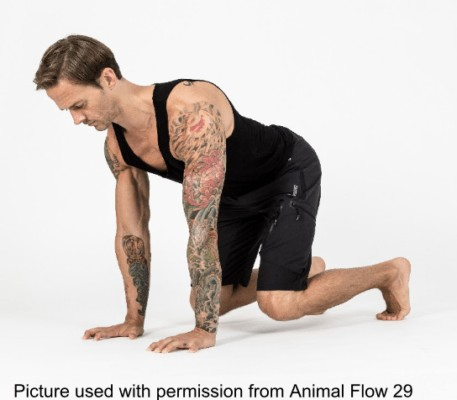While facilitating the Level One Animal Flow Course over the weekend, I asked the group at the start of day two, what was their major take away from day one? One of the participants came back with a fantastic answer: The complexity in the simplicity. He immediately received a high five and I was left pondering his powerful response.
I know at PTA Global we often make this statement, “making the complex simple.” In terms of client coaching and getting the client to understand and enjoy movement/exercise, this is very important. Blowing the client away with big anatomical descriptions or huge science-based answers may make you sound super intelligent, however, it may make your clients feel quite the opposite. You as a coach, however, do need to understand some of the complexity in coaching movement to be able to interpret that information and make it ‘simple’ for them.
If I understood my participants response correctly, he was alluding to the fact that in such a simple looking movement (in this case he was referring to the Animal Flow Activation movement called Beast), there are so many joint structures, positions we can observe, so many joints we can look at and use for observation and a huge amount of carryover for persons daily movement as a bipedal human being. The major takeaway here in terms of linguistics is observation.
Observing your clients movement is of course important. But, it’s a skill. It’s a skill that develops over time, with practice. It’s a skill that you will continue to hone, redefine and apply with each new up-skilling event you encounter. The real skill acquisition comes when you can not only observe your clients or groups physical movement while they’re ‘exercising’ it’s also in observing their physical state, and, dare we say it, their emotional state. Because, just because the science says this movement, done this many times at this intensity equals ‘x’, if your client or group is emotionally not there that day, or is actually hating the activity you prescribed, that data may be way off. Again, complexity in the simplicity. Watching for movement competence through specific skill exercises, knowing when to stop a set because things are physically or emotionally not happening well. Learning strategies for coaching, whether corrective strategies or through linguistics to help people move better is a complex skill that needs to be delivered simply! Now go back to PTA Global’s statement, ‘making the complex simple.’ Understanding when to play and allow free movement and the benefits of that is also just as important when dealing with human beings!
It has long been said that if you understand something, you can coach it in a way people understand. Or to state it negatively as PTA Global Co-founder Ian O’Dwyer often does: “Can’t feel it, can’t coach it.” You need to hone your coaching skills. Craft your coaches eye and practice your coaching language to become a great coach that can truly help people.

